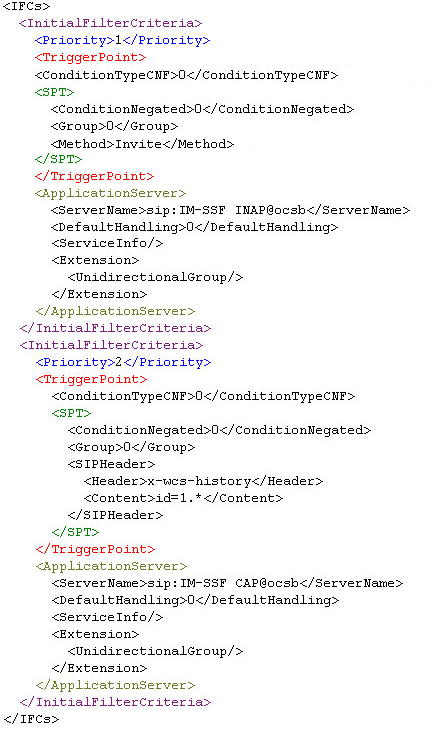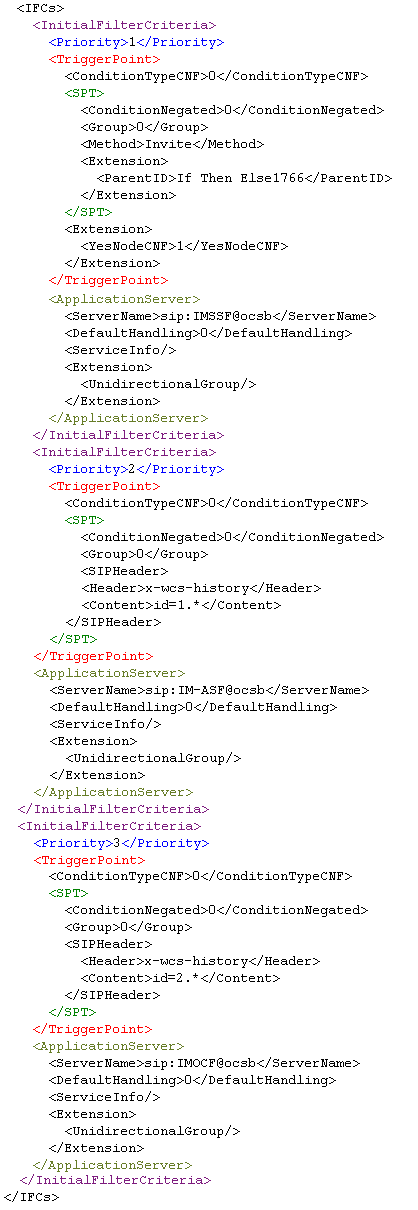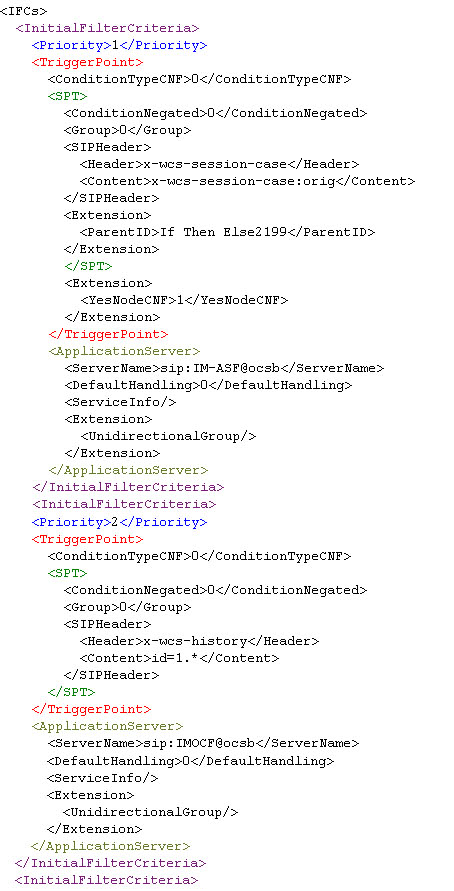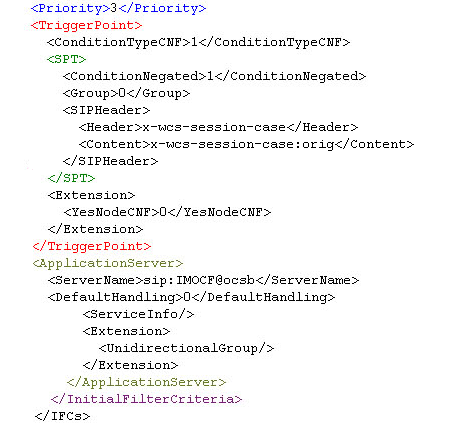A Use Cases
This appendix presents some typical use cases that can be used as examples when creating orchestration logic flows for Oracle Communications Service Controller.
About the Use Cases
Some of the use cases in this appendix are based on the use cases described in Service Controller Concepts Guide.
The uses cases in this appendix are demonstrated in their XML format. Use the XML as a starting point for your own orchestration flows.
Service Orchestration
The following flows illustrate Service Controller orchestration capabilities.
IN Service Interaction
Figure A-1 shows a use case for how the Orchestration Engine forwards a session to an online charging application server and then to a VPN service.
Use the code sample below as a starting point to create your own logic flow for an IN Service Interaction.
IMS Service Interaction
Figure A-2 shows a use case for how Service Controller communicates with the IMS network and provides service interaction based on the logic retrieved from the database.
Use the code sample below as a starting point to create your own logic flow for an IMS Service Interaction.
Forcing Back to Back
By default, when the OE receives a 302 Moved Temporarily response from an application, the OE releases the session. When you want the OE to continue the session after receiving a 302 Moved Temporarily response, you need to enforce the application that returned the 302 Moved Temporarily response to work as a Back-to-Back (B2B) application.
Figure A-3 shows a use case for how a VPN service with which the OE communicates through the IM-ASF a 302 Moved Temporarily response. The IM-ASF is set to force the session to continue to the online charging application.
Use the code sample below as a starting point to create your own B2B logic flow.
Choosing between Two Execution Paths
Figure A-4 and Figure A-5 show a use case for how, if the session is originating, the OE routes the session to the VPN application server and then to the online charging application server. If the session is terminating, the OE routes the session directly to the online charging application server.
Use the code sample below as a starting point to create your own logic flow for continuing a session when conditions are not met.




